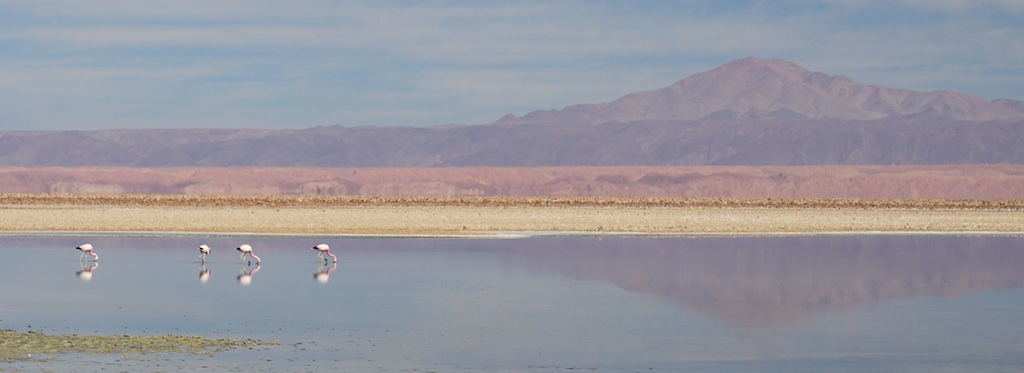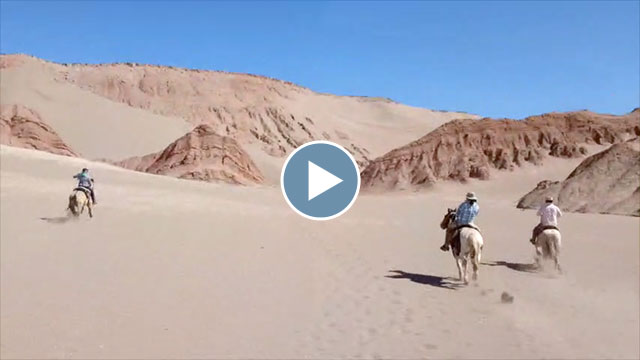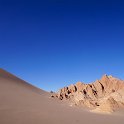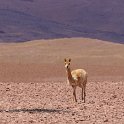Glenn and Michele are in the middle of a six-month travel adventure (starting in South America) and I was able to fly down and join them in northern Chile at the end of September to get to see some of the Atacama Desert region. We were able to make arrangements through BikeHike for nine days of guided activities and exploration surrounding the little oasis/tourist town of San Pedro de Atacama, including hiking, biking, horseback riding and several days of trekking.
This is the world’s driest desert (in the sense of how little rain ever falls) and it may also be the world’s oldest desert, the region having been hyper-arid for many millions of years. While it may almost never receive any rain, water does reach the basin from surrounding mountain sources though it all eventually evaporates, leaving behind salt and mineral deposits. There’s still plenty of wildlife and the area is known for its varied and gorgeous geological formations, resting up against the immense Andes mountains.

Some of the highlights of the trip:
- Horseback riding and later hiking and sand surfing in “Death Valley”, a beautiful area of red rock and sand dunes which apparently picked up a name mistook from the French priest who tried to name it Valley of Mars (“marte” not “muerte”, in French).
- Hiking up the Gatchi Gorge to bathe in the hot springs and source of the river Puritama.
- Trekking from the town of San Pedro de Atacama (7900 ft) up to the high wetlands of Machaca (13,000 ft) over three days and 42 miles, climbing up from desert terrain through river canyon lands to mountain villages and terraces.
- Biking and walking out among the salt flats and lagoons in the Atacama.
- Hiking up the little mountain of Zoquete (16,000 ft) above the high altitude El Tatio Geysers
- Enjoying the magnificent night sky of stars from such a high and dry landscape. The Atacama area is known as a prime astronomical viewing area for its clear, dry skies and high altitude and there are numerous observatories in the surrounding mountains.
If you’re interested in booking a similar tour, ours was actually put together by BikeHike, whom we’ve done trips with in the past, but they don’t actually offer this region any more. However, even though our itinerary was customized for us to add a variety of activities, very similar itineraries (including the multi-day trekking and the overnight in the indigenous village of Rio Grande) are actually widely available from numerous tour operators over the web: Chimu Adventures, KE Adventure Travel, Cascada Travel, Amazon Adventures and others. Despite this, we didn’t really encounter a lot of other tourists – and none at all during the trekking portion. I believe we were there at the very start of the tourist season though.
Thanks again to Yasu and the rest of the crew for a wonderful little adventure!

Michele has also posted a couple of times about the trip in her blog:
Click through for the full gallery of photos from our trip:





2 comments
I was hoping you had time to check out the array of world class telescopes in the Atacama Desert region. I would have enjoyed seeing them as part of your nifty video presentation. I can’t imagine seeing the night sky, you will never see a night sky equal to what you can see there anywhere. Talk about being underneath the stars, the Milky Way was probably spectacular. Thanks for posting this adventure.
No, we didn’t have the chance to tour any of the uh… more serious scientific observatories in the Atacama. (Are they even open to the public?) We did spend one evening on a sky tour with a local amateur astronomy club’s telescopes in San Pedro, which was fun. And we of course got to see the gorgeous night sky on our trekking days – there’s a couple of pictures in the gallery.
I think we may have had an even more brilliant night sky when we got to Bolivia’s Uyuni Salt Flats (at 12,000 ft) the following week – I have more pictures over in that gallery. We were there while the flats were dry, but do a google search to see some amazing photos of the milky way over the giant reflecting pool that the Uyuni flats become in January.
Thanks for your comment!